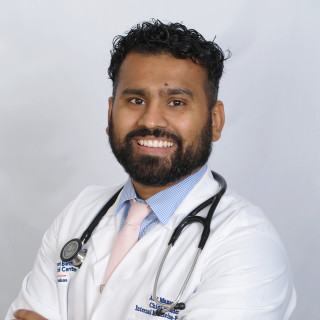 In the first article of this two-part series, I discussed my experience with burnout and went on to analyze what I believe are three driving factors that are destroying our primary care system and its physician workforce. Briefly, these are increasing costs, leading to more physician control which has resulted in physician burnout and the shortage. All are inter-connected and have potentiated increased control of medicine by forces outside of our control and has led to a system marred by burdens for paperwork, prior authorizations, merit-based incentive payment system (MIPS), and administrative tasks which has coalesced to a health care system of rewards, punishments and pay for performance.
In the first article of this two-part series, I discussed my experience with burnout and went on to analyze what I believe are three driving factors that are destroying our primary care system and its physician workforce. Briefly, these are increasing costs, leading to more physician control which has resulted in physician burnout and the shortage. All are inter-connected and have potentiated increased control of medicine by forces outside of our control and has led to a system marred by burdens for paperwork, prior authorizations, merit-based incentive payment system (MIPS), and administrative tasks which has coalesced to a health care system of rewards, punishments and pay for performance.
I, however, believe that there is a solution for cost control, addressing physician burnout and the primary care shortage, and that solution is Direct Primary Care (DPC), which successfully challenges the existing system. DPC gives physicians autonomy that they so desperately need to help both themselves and their patients, while helping decrease cost of primary care and address physician burnout.
Direct Primary Care Defined
DPC has been around since the late 1990s. It isn’t an alien system to physicians. While it does not seem to be a mainstream concept familiar to the majority (75%) of health care managers, roughly 87% of physicians reported being at least somewhat aware of the DPC approach.
Even though industry observations about direct primary care sometimes treat DPC as synonymous with concierge medicine or a subset thereof, DPC isn’t anything like concierge practices, but rather it offers concierge-like services at a fraction of the cost. The American Academy of Family Physicians (AAFP) does draw some distinctions between the two terms.
DPC Practices
• Monthly membership fees paid by patients or, sometimes, the patient’s employer
• Patient fees cover extended visits, clinical, lab and consultative services, care coordination, and comprehensive care management
• Does not accept insurance or participate in government programs, relying solely on patient fees
Concierge Practices
• Annual patient membership contract with higher fees that can be paid annually or monthly
• Membership fees cover an in-depth physical exam and screenings
• May continue to accept insurance plans and government programs
• Continue to bill patient’s insurance company for covered services in addition to membership fee
• Cater to higher income populations
The number of DPC practices is increasing. Nationwide survey research conducted by Physicians Practice Magazine suggested 53% of physicians were considering or already working in direct primary care, whereas the AAFP reported in Spring 2018 that 3%, or 4,200, of its nearly 140,000 members had DPC practices. The Direct Primary Care Coalition, a national DPC advocacy organization, estimates that there are about 1,000 DPC firms in the United States covering roughly 300,000 Americans.
Direct Primary Care Economics and Cost Control
DPC is affordable. In 2017, both the AAFP and the DPC administrative software platform Hint both surveyed their respective members and users about their DPC practice. Their cost findings share strong similarities.
Average Adult Membership Fee: $82.8670% of monthly adult membership fees between $25 and $100
82% of monthly family membership fees between $50 and $225
AAFP DPC members also report that 87% did not charge a per-visit fee in addition to patient membership fees. Additionally, over half (57%) have executed employer-based contracts, and 29% are looking to pursue contracts in the next one to three years.
The average monthly cost of individual or family membership for a DPC practice is less than that of a cellphone bill. Such individuals, whom choose this route, have the ability to still buy health insurance but do so for a catastrophic illness with companies that implement the philosophy of medical cost sharing or even opt for high deductible plans with the option of putting money into a healthcare savings account that they can utilize towards their deductible.
The first example of a corporate, multisite DPC model is Qliance. Although it abruptly closed in 2017, with leadership citing “overwhelming financial difficulties” and an “unauthorized withdrawal” by the company’s lender of around $200,000 as the reasons the company suddenly closed its primary care clinics. Internal data from the group demonstrated that Qliance patients have a >50% reduction in emergency department visits, specialist visits, advanced radiologic testing and surgical procedures than traditional practices. As expected, the only measure of increased utilization was the number of primary care visits, which more than doubled from an average of two to an average of four per year during the reporting period. Clearly, as the utilization of low-cost comprehensive primary care increases, the need for high-cost emergency and specialty services decreases. Even amongst elderly recipients of Medicare Advantage, providing similar and easy access to primary, specialty, pharmacy and ancillary care improved healthcare utilization and reduced healthcare costs.
Physician Burnout and Primary Care Shortage
Not only does DPC increase access and comprehensive medical care and reduces overall cost while improving patient utilization of high cost health services, when compared to a consumer-driven health plan and traditional practices, but also the model provides improved patient experience, though formula evaluation of a DPC practitioner’s experience within the model is limited.
First, we must understand that there is a problem, and then determine what exactly that problem is. The Physicians Foundation, with help from Merritt-Hawkins who conducts biennial surveys of American physicians, conducted their most recent one in 2018. Overall, the survey examined physician “professional morale, practice patterns, career plans, perspectives.” Amongst the respondents, 55% describe their morale as somewhat or very negative, 78% sometimes, often or always experience feelings of burnout and 23% of physician time is spent on non-clinical paperwork. 46% of the respondents planned to change career paths, 48.7% would not recommend medicine as a career to their children or other young people. 78.7% of physicians found patient and physician relationships amongst the two factors most satisfying with 37% finding loss of clinical autonomy and 37.6% finding regulatory/insurance requirements as the least satisfying part of medicine. 46.4% of physicians spend greater than 10 hours per week doing non-clinical (paperwork) duties only. 17% plan to retire, while 12% plan to find a non-clinical job or position.
This gives us a better understanding of what physicians feel and what may be leading to burnout. So, what about direct primary care physicians? The Moral and Practice Patterns of DPC providers was a survey sent out to DPC physicians of which 72 responded from 39 states. Amongst them, 9.7% reported often experiencing feelings of burnout and no respondents reported always experiencing feelings of burnout compared to 78% of physicians working in the existing insurance-based system. Nearly 67% reported that “they would recommend medicine to their children and other young people” compared to only 48.7% in the current system. Amongst the physicians, only 26.4% reported spending greater than 10 hours per week on “non-clinical (paperwork) duties” versus 46.4%. 79% respondents reported “generally having all the time needed with patients to provide the highest standards of care”.
The data speaks for itself and the conclusions are for the reader to derive. Losing up to and including seven medical school classes to burnout and approximately one to suicide every year, will continue the trend of physician shortage, especially in primary care. The current solutions of giving full practice rights to advanced practice providers will potentially continue the uptrend of high cost utilization.
I know the path I will take as I start my career in primary care medicine and the data supports my decision. But what will the future hold for the country? It is difficult to predict, but there are forces in play, and it seems that the tide for health care is moving towards allowing people to have skin in this game called health care. When people are directly involved with the cost of their care, only then do businesses change. A business that hides behind unknowns can do so for so long as people allow it. As I continue my lifelong journey to try and perfect my understanding of the human mind and body, I’ve learned that I, along with my colleagues, must do more than just manage disease. We must understand the business side of medicine as well and pass on that knowledge to our colleagues as well as our patients. We should strongly consider a holistic approach towards the health of our patients, which includes more than their acute complaints and only then will we be able to truly provide complete care. I will end with one very famous quote, that speaks for itself, of Andrew Taylor Still, MD/DO, father of osteopathic medicine: “To find health should be the object of the doctor. Anyone can find disease.”
Adil Manzoor is an internal medicine/pediatric physician practicing in New Jersey. He's passionate about mentoring the next generation of leaders. In his free time he writes for local newspapers, mentors youth, reads voraciously, and most important of all, spends time with his wife and their daughter. And when time finally permits, binges Netflix! He can be found on Twitter at @Manzooradil2. Adil is a Doximity 2019-2020 Fellow.
Image: Lightspring / shutterstock






